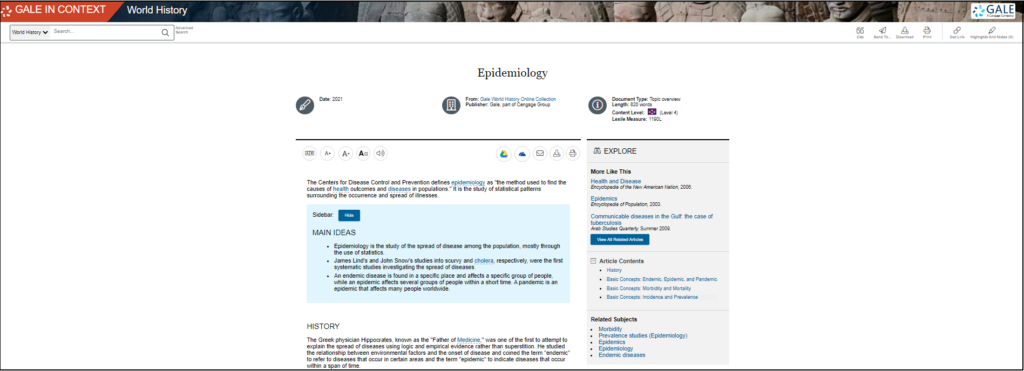| By J. Robert Parks |
In light of the last three years, the 2003 SARS (severe acute respiratory syndrome) epidemic may strike many as almost quaint. It led to barely 8,000 known cases and was responsible for just 774 deaths worldwide. At the time, however, it was seen as a potentially devastating new illness that could cause a pandemic. Alarmed by the possibilities, the World Health Organization (WHO) issued a global alert about the virus 20 years ago this week. Then, three weeks later, the organization issued the most stringent travel advisory it had ever given up until that time, strongly advising people not to travel to Hong Kong or the nearby Chinese province of Guangdong. Teachers and librarians wanting to compare SARS and COVID-19—and there are fascinating similarities and differences—will find plenty of resources in Gale In Context: World History.
SARS and COVID-19 are both respiratory diseases caused by coronaviruses, and they both started in China, although the origin of SARS was in Foshan, a city in southern China about 620 miles south of Wuhan, where COVID originated. As with COVID-19, SARS started in November but wasn’t immediately recognized as a new virus. Although the COVID-19 outbreak was apparent as early as January, SARS wasn’t on anyone’s radar as a significant threat until February 10, 2003, when an email was sent to WHO about an unusual form of pneumonia. Two weeks later, the virus started spreading outside China when an infected doctor traveled to Hong Kong for a family wedding and some of his fellow travelers caught it and spread it to Vietnam, Canada, Singapore, and Taiwan.
When those people were admitted to hospitals, it quickly became apparent that something unusual was happening, as dozens of health-care workers in both Vietnam and Hong Kong became ill, including noted epidemiologist Carlo Urbani. Urbani formally identified SARS as a unique disease in late February and, tragically, died from it a month later. His report, however, alerted other epidemiologists, who helped push governments and public health officials to action.

SARS was a useful test case of procedures that international health organizations had adopted to prevent the spread of infectious diseases. By late March 2003, WHO was recommending that mandatory screening be taken of anyone returning from visits to China, Hong Kong, and Southeast Asia. Also, it advised that anyone who was infected should quarantine to prevent further spread. The Chinese government was slow to react, but once it did, in late April, it coordinated massive efforts to track and contain the virus. By early July 2003, WHO announced that the SARS epidemic had been contained.
The ability to stop the spread of SARS was a success story for the growing field of public health. SARS is what is known as an emergent infectious disease; other examples include Ebola, which has flared up in different parts of Africa ever since it was first identified in 1976. As the world has become interconnected and international travel significantly more common, public health officials have needed to be more vigilant about these kinds of diseases. Officials recognize that viruses are likely to spread more rapidly than they have in the past. The fact that more people live in concentrated urban areas makes it more likely that viruses will mutate into variants that will defy containment.
The historical development of virology, including its success in eradicating smallpox, is a useful way for educators to combine history and science. The recent history of epidemics and pandemics, including COVID-19, touch on a host of additional subjects—from civics and political science to geography and culture.
About the Author
J. Robert Parks is a former professor and frequent contributor to Gale In Context: U.S. History and Gale In Context: World History who enjoys thinking about how our understanding of history affects and reflects contemporary culture.


